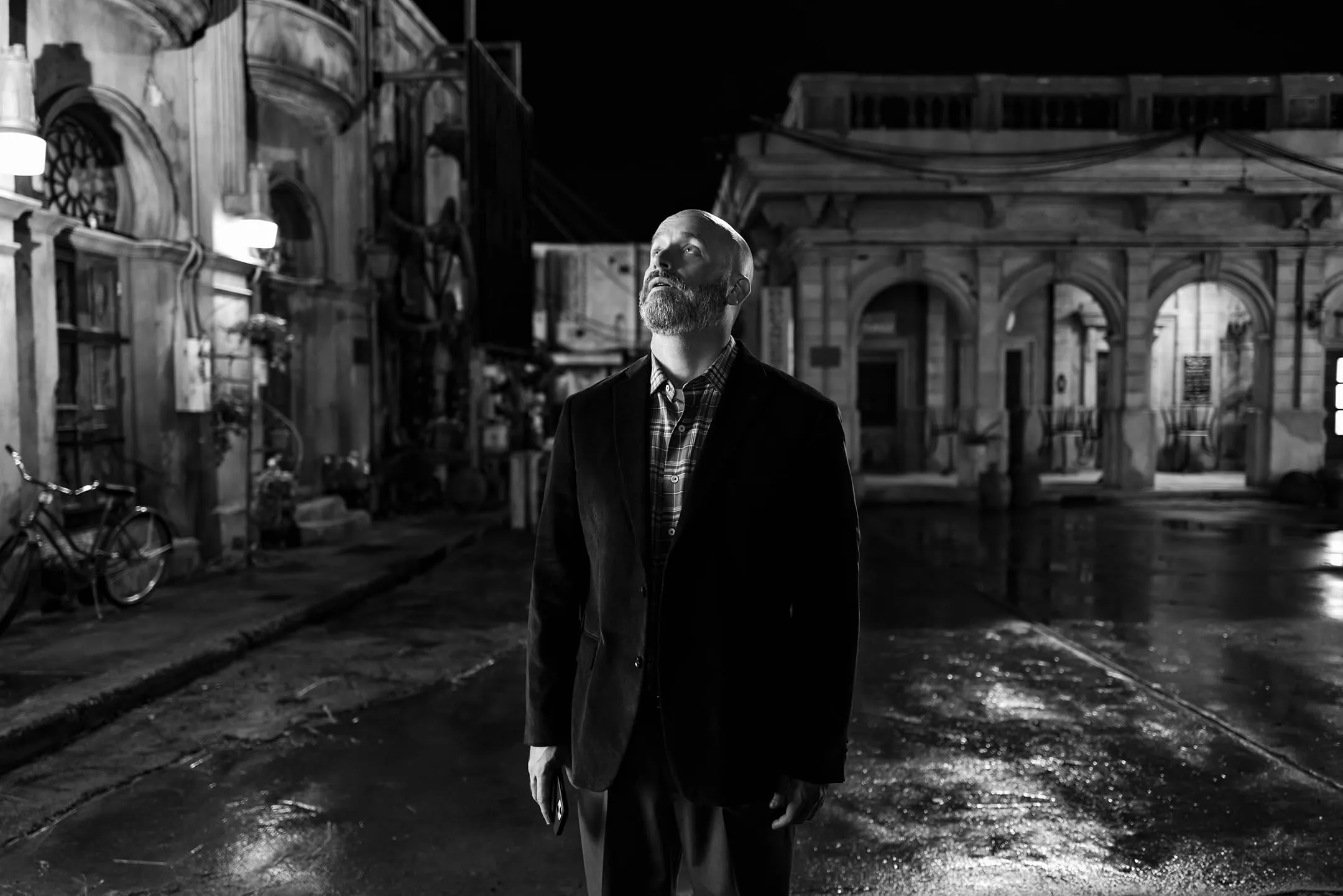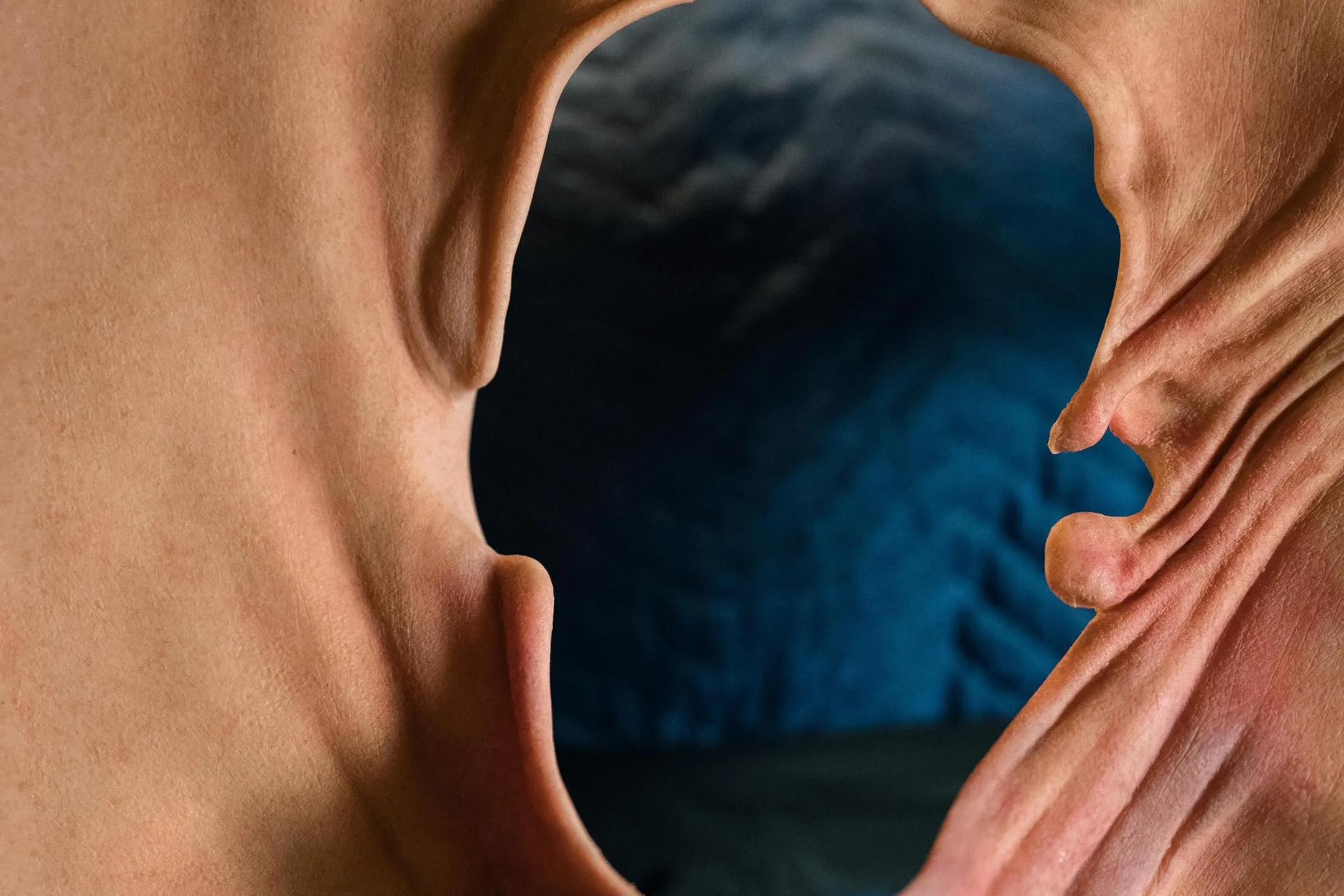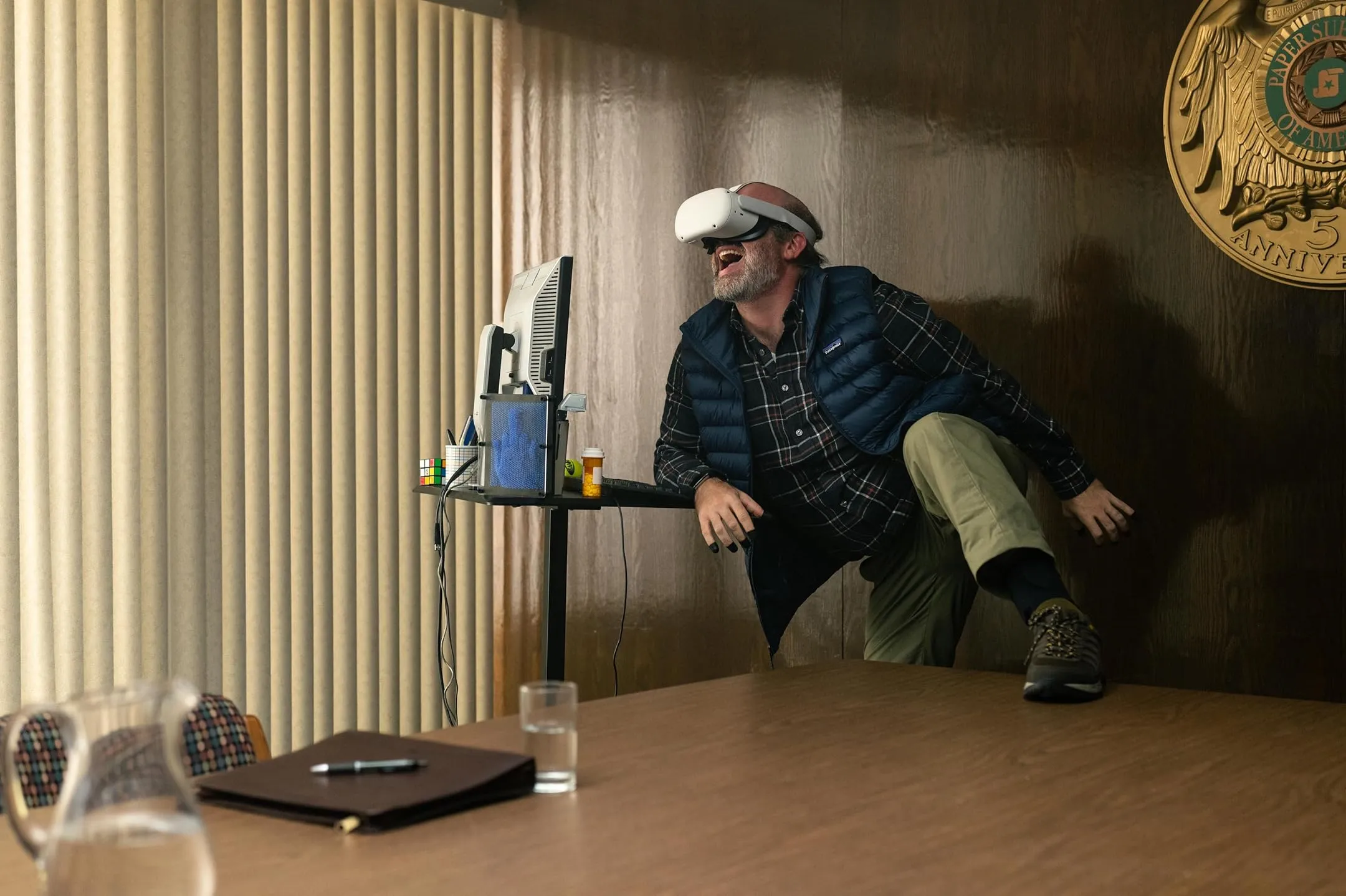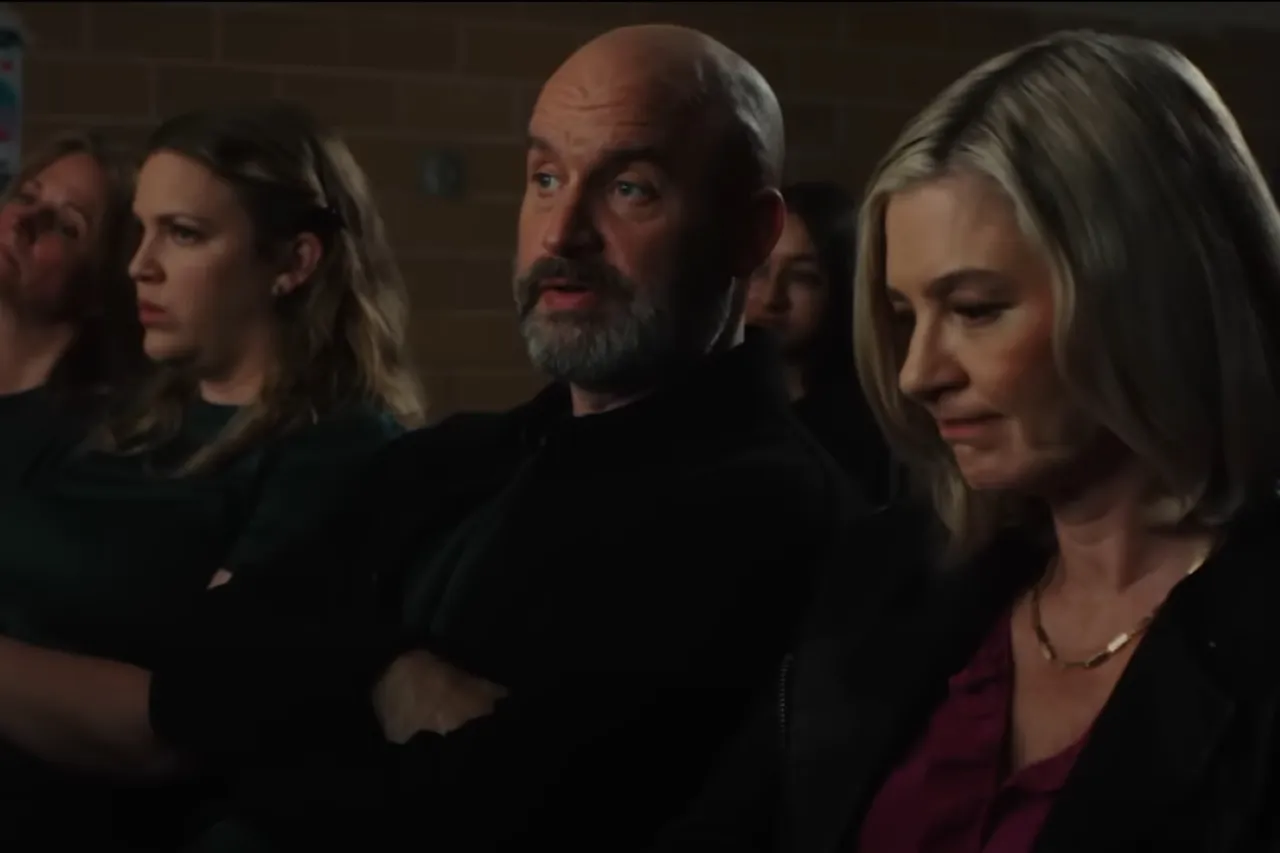Bad Thoughts arrived on Netflix on May 13, 2025, as a six-episode anthology sketch show totaling 114 minutes. Each installment unfolds through two or three discrete vignettes, some extending into two-part arcs that coax viewers into binge mode via cliffhanger endings. Creator and lead performer Tom Segura anchors the program with monologues delivered against a blank backdrop, setting up each episode’s thematic focus before launching into surreal comedic scenarios.
While the series carries a “dark comedy” label, its true identity lies in relentless gross-out humor and graphic sexual absurdity, leaning more toward brazen provocation than existential dread. Segura wears multiple hats—showrunner, writer, director and chameleon actor—shifting between characters with athletic physicality and deliberate vocal quirks.
Through taboo sketches involving bodily functions, humiliating desires and grotesque violence, the show seeks to elicit a blend of revulsion and laughter. That strategy isn’t designed for safe comfort; it operates as a social experiment in taste thresholds, challenging audiences to decide whether outré spectacle can provoke genuine reflection or simply gratify shock appetites.
Concept & Format: Sketching New Territory
From its first moments, Bad Thoughts adopts an anthology model that mirrors the fragmented attention spans of streaming audiences. Each episode deploys two or three discrete sketches—some unfolding across two parts—to explore themes such as “jobs,” “family” or “health.” This segmented approach resists traditional sitcom structures by refusing a single throughline, inviting viewers to sample extremes of humor without long-term character investment.
Segura’s white-void monologues frame each episode, positioning him as both ringmaster and outsider. In theory, these intros offer thematic context; in practice, they often feel like superfluous bookends, a nod to performative self-awareness that seldom influences the sketches themselves. Yet the device signals a broader trend: streaming platforms are comfortable foregrounding creator personalities rather than polished narratives.
Episodes clock in at about 15–20 minutes, six in all, delivering 114 minutes of content that breeze by—perfectly engineered for Netflix’s autoplay. Cliffhanger endings on two-part segments reinforce binge behavior, underscoring how creative teams now sculpt pacing around algorithms as much as story demands.
Genre send-ups range from post-apocalyptic horror to foreign-film pastiche to sleek spy thrillers. When spoofing Bond-style conventions, the series nails every sonic cue and costume detail, while other send-ups—like the mock studio “A25” credits—lean on broader satire, sometimes feeling rough at the edges. In combining precise parodies with looser genre jabs, Bad Thoughts embraces a sketch ethos that values both meticulous craft and improvisational risk, reflecting how contemporary comedy experiments with form in an era defined by streaming experimentation.
Provocation and Punchlines: Themes & Tone
Bad Thoughts drifts repeatedly into free-speech territory, interrogating what happens when taboo utterances escape private realms. Sketches show Segura’s characters courting HR complaints, only to pivot into hypotheticals—“What if a child recites Grandpa’s racist war story at school?”—and dare audiences to judge the context. That framing nods to larger debates around cancel culture, yet rarely commits to an argument, as if daring viewers to supply their own stance on whether offense can ever be neutralized by framing.
Sexual humiliation saturates the series, manifesting in repulsive setups where men face unwanted acts from strangers, senior citizens or even monsters. These vignettes expose anxieties about bodies and consent, sparking uneasy laughter when repulsion morphs into comedy. By foregrounding such extremes, the show sketches a landscape of male vulnerability—fear of exposure, dread of losing control—echoing broader conversations about power dynamics and autonomy.
Gross-out humor anchors many gags: soiled pants hitting the floor with cartoonish plops, limbs bent in grotesque contortions, spurts of blood in over-the-top violence. The series flirts with the idea that shock alone can sustain humor, but at times the repulsive imagery overwhelms the comedic rhythm, leaving the viewer to wonder if laughter emerges from relief rather than genuine amusement. Yet when the gag lands—a perfectly timed plop or an absurdly prolonged twist—the visceral reaction can feel unexpectedly cathartic.
Amid the crassest sketches lies an emotional undercurrent, most vividly in “Rex Henley,” where a fallen country star grapples with fame’s alienation. In those scenes, Segura channels a tremor of genuine insecurity: success as isolation. That glimpse into vulnerability contrasts sharply with the broad potty jokes, suggesting the series might have more to say about identity and connection if it chose to lean into its quieter moments.
Crafting the Sketch: Narrative Mechanics and Flow
Each vignette in Bad Thoughts launches with a premise so clear you can almost see the neon sign: a spy’s pants betray him, a gym session devolves into surreal agony, a VR fantasy morphs into nightmare. Those setups demonstrate impressive economy—no wasted beats before the punchline lands. Yet when Segura returns to motifs like virtual reality across multiple sketches, the repetition flirts with exhaustion. What began as incisive satire risks becoming comfort food, the gag stretched thin by overfamiliarity.
Episodes hinge on thematic cohesion, grouping sketches under banners such as “health” or “family.” Some themes bind tightly, as in the “Cyrus” trilogy where each revisit ramps up stakes; others feel more like casual playlists, sketch to sketch with only the loosest thread. Transitions vary in polish: some cuts land with satisfying thematic callbacks, while others jolt viewers into entirely new worlds, undercutting momentum.
Timing proves crucial in a show built on shock and surprise. When setups linger—an axe poised too long before contact—the humor sags under its own weight. Conversely, moments of escalating absurdity, such as the third act of “Cyrus,” hit with rhythmic precision, each twist adding velocity. That measured build reveals the writers’ grasp of comedic architecture, even if they sometimes overstay a welcome.
Segura’s monologues bookend episodes in his signature stand-up cadence, but the white-void framing rarely informs the sketches’ shape. It often reads as performative punctuation rather than structural linchpin. Dialogue within sketches oscillates between breezy, natural banter and lines so explicitly constructed for shock they drag viewers out of the moment. When balance is struck, however, the result is a sharp reminder that comedy can wield discomfort as a storytelling tool.
Shifting Masks: Performance and Production
Tom Segura anchors Bad Thoughts with chameleon-like agility, inhabiting roles that range from trembling horror-movie leads to leering barroom patrons. He slips into each persona through subtle shifts—a clipped accent here, a hunched posture there—while costume changes underscore the radical pivots between sketches. In the country-singer arc, he adopts a down-home drawl and cowboy boots, only to swap them moments later for the sleek suit of a spy. That leap in physicality reflects a broader trend: streaming comedies granting creators freedom to showcase range without committing to a single character arc.
Guest stars bolster the series’ tonal swings. Robert Iler’s deadpan in a toilet-bound sketch lends unexpected pathos, while Daniella Pineda grounds the two-part “Rex Henley” storyline with resilient earnestness. Dan Stevens and Shea Whigham pop in as unwitting foils, reminding viewers that absurd premises can land harder when anchors are real actors, not just gags. Rachel Bloom’s sharp timing injects playful energy into the show’s most outlandish scenarios.
Behind the camera, Rami Hachache and Jeremy Konner steer each spoof with care. Lighting in the Bond send-up gleams like a glossy action film, whereas the post-apocalyptic tale washes out into desaturated grays. Set designs shift from sterile corporate offices to ramshackle camp ruins, signaling that production teams now pivot between genres as swiftly as writers switch punchlines.
Sound design doubles as commentary. The meticulously timed “plop” echoing across a marble floor feels almost reverent in its absurdity; a swelling orchestral sting undercuts a monster-sex gag with ironic grandeur. Editing stitches sketches into a brisk cadence, though some transitions jar more than they jolt—two-part arcs occasionally stall under their own weight. Still, the interplay of performance choices and production polish highlights how streaming platforms are embracing sketch comedy as a space for cinematic experimentation.
Episode & Sketch Highlights
The opening Bond-style thriller nails its send-up from the first frame. Immaculate suits, shimmering gadgets and a shadowy villain’s lair set expectations for a sleek spy ride—only to undercut them with the perfectly timed “plop” of the hero’s soiled pants. That collision of polished genre conventions with gross-out humor defines the series’ fearless tone. The twist arrives so swiftly that viewers register both the homage to espionage lore and the gleeful assault on decorum at once.
The “Cyrus” sequence unfolds as a two-parter, then returns for a third act, each time amplifying the absurdity. Part one introduces a hapless protagonist haunted by a mystical cow; part two ratchets up gore and cosmic dread; the final reprise loops back into cartoonish surrealism. Each revisit tightens the comedic spiral, demonstrating mastery of escalation while reminding us how repetition can transmute shock into ritualized delight.
“Rex Henley” leaps from potty shock into oddly intimate territory. Segura’s turn as a country singer clinging to relevance offers a glimpse of anxiety that cuts through the broader chaos. With Daniella Pineda as his pragmatic foil, the sketch feels less like a gag reel and more like a parable of fame’s isolation—a detour into vulnerability amid the torrent of gross humor.
In the family-themed school play sketch, a child recites his grandfather’s racist war memoir before Segura’s on-screen parent recoils. That cringe-inducing setup forces viewers to weigh horror against comedic distance, raising questions about generational legacies and whether laughter can coexist with accountability when history’s darkest chapters are parodied.
The coffee shop revenge parody borrows John Wick’s relentless pursuit yet casts it in the wrong skin: an obnoxious customer hunts down baristas. The misalignment undercuts root sympathy, sidelining potential commentary on service-worker mistreatment. In a series eager to provoke, this sketch exposes how choice of victim shapes audience investment.
Health-themed gags around virtual reality explore male wish fulfillment by looping dream escapades into nightmare. The premise resonates with current VR fascination, but repeated returns to the concept risk numbing impact as novelty fades.
Other moments ride the edge of comedic indulgence: a senior citizen’s erotic antics, a monster hookup and a shockingly choreographed self-mutilation scene. When these bits land, they heighten laughter through sheer audacity; when they lag, they feel gratuitous—an experiment in how far television can push a viewer’s gag reflex before the joke snaps.
Final Impressions
Segura’s fearless genre send-ups deliver razor-sharp homages and stomach-churning laughs. The Bond spoof’s immaculate production and perfectly timed “plop” sequence, alongside the “Rex Henley” arc’s surprising tremor of insecurity, showcase his dedication to each bit.
Yet the series sometimes leans too heavily on shock value, with thematic links fraying when a gag exists solely for gross-out effect. Pacing dips occur when sketches overstay their welcome or thematic cohesion slips between loosely connected vignettes.
Fans of extreme comedy and Segura devotees will revel in the audacity and inventive flair, while viewers seeking more narrative depth or focused commentary may find themselves adrift. If future seasons sharpen their thematic focus, integrate richer emotional stakes and apply taboo humor with precision, Bad Thoughts could evolve from a wild experiment into a vital sketch vehicle—one that challenges streaming formats and pioneers fresh directions for boundary-testing television.
Full Credits
Directors: Tom Segura, Rami Hachache, Jeremy Konner
Writers: Tom Segura, Jeremy Konner, Rami Hachache, Conor Galvin, Craig Gerard, Matthew Zinman
Producers: Tom Segura, Jeremy Konner, Rami Hachache, Ryan Hall, Molly Mandel, Craig Gerard, Matthew Zinman
Cast: Tom Segura, Daniella Pineda, Robert Iler, Arnold Chun, Alexis Abrams, Shea Whigham, Hannah Bittick, John Gholson, Christina Pazsitzky, Kirk Fox, Ryan Sickler, Alexandra Chando, Kirsten Kendall, Alexandra Broussard, Billie D. Merritt, Jenn Covington, Bobby Lee, Malin Barr, Sarah Burns
The Review
Bad Thoughts Season 1
Bad Thoughts packs a jolting blend of pitch-perfect genre send-ups and unabashed gross-out humor, anchored by Segura’s uncanny commitment to every gag, though its shock-first approach sometimes outpaces thematic cohesion.
PROS
- Genre parodies hit with cinematic precision
- Segura’s versatile performances drive each sketch
- “Rex Henley” arc adds unexpected emotional depth
- Slick pacing encourages binge viewing
CONS
- Thematic links can feel loosely tied
- Shock humor sometimes overwhelms substance
- Recurring gags risk wearing thin
- Monologue framing rarely influences sketches





















































